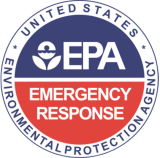EPA Launches Largest Wildfire Hazardous Material Removal Effort in Agency History
Emergency Response
WASHINGTON – The U.S. Environmental Protection Agency is currently undergoing the largest wildfire hazardous waste cleanup in the history of the agency as it assists local governments and residents in the wake of catastrophic fires in Los Angeles County. EPA has completed reconnaissance at 6,022 properties. This includes 3,636 properties impacted by the Eaton Fire and 2,386 properties impacted by the Palisades Fire. The agency has successfully removed 80 electric vehicles and bulk energy storage systems, which are extremely dangerous to the public and the environment and will continue ramping up such operations.
Currently there are 1,050 response personnel in the field, up from 478 at the end of last week and with an additional 280 mobilizing today. EPA is assembling 60 teams to clear hazardous materials from the more than 13,000 residential and 250 commercial fire-impacted properties. EPA has convened a working group to coordinate with utilities, state, local and federal stakeholders to expedite cleanup operations and meet unmet needs in the sector. At the request of water utilities, EPA is also providing technical assistance to help bring systems back online.
“EPA is undertaking the largest wildfire cleanup in the history of the agency. We’re not going to wait days or weeks or months to ramp up. We have over a thousand personnel on the ground to aid Californians, and our local, state, and federal partners, in Los Angeles’s recovery. The Trump administration is tackling this head on in a way that EPA couldn’t possibly be prouder to be a part of,” said EPA Administrator Lee Zeldin.
EPA has been assigned by the Federal Emergency Management Agency (FEMA) with the first stage of the overall recovery and cleanup: the project to remove lithium-ion batteries and to survey, remove, and dispose of hazardous materials from properties burned by wildfires. Residents returning home are encouraged to exercise extreme caution and can call our hotline at 1-833-798-7372 if they encounter a lithium-ion battery while re-entering their property and/or are unsure if a lithium-ion battery was damaged.
On Jan. 24, 2025, President Trump issued Executive Order Emergency Measures to Provide Water Resources in California and Improve Disaster Response in Certain Areas. This directs EPA to complete its hazardous materials mission responding to the Los Angeles wildfires as soon as practical. EPA’s work removing hazardous materials is Phase 1 of the federal cleanup response. This work, conducted at no cost to residents, is a mandatory process to ensure the safety of residents and the workers who will — after the hazardous material is gone — conduct the Phase 2 debris removal in the burn footprints, and to prevent these materials from being released into the environment. Phase 2 will be conducted by the U.S. Army Corps of Engineers, as coordinated by FEMA. Once Phase 1 has been completed at a property, Phase 2 will begin automatically.
EPA will remove potentially dangerous everyday products including household products like paints, cleaning supplies, and automotive oils, garden products such as herbicides and pesticides, batteries, including both standard and rechargeable types, and propane tanks and other pressurized gas containers. They will remove visible asbestos and inspect pressurized fuel cylinders (like propane tanks). After a fire, these products require special handling, especially if their containers are damaged. EPA field teams will also remove items thought to have asbestos if they are easy to identify, but the property will not be fully cleared until Phase 2 (debris removal).
EPA will also remove lithium-ion batteries from vehicles, homes and other products. Many homes have damaged or destroyed lithium-ion batteries, lithium-ion battery energy storage systems, and electric and hybrid vehicles. The batteries should be considered extremely dangerous, even if they look intact. Lithium-ion batteries can spontaneously re-ignite, explode, and emit toxic gases and particulates even after the fire is out.
At the direction of President Trump, EPA is partnering with the U.S. military and Department of Homeland Security to develop and execute a plan to expedite the removal of contaminated and general debris.
If residents are on their property when EPA arrives for the hazardous materials removal, the crew will not be able to conduct work at that property and will return at a later time. EPA will remove only hazardous materials, by hand, and will not remove any non-hazardous materials. If crews find objects of value, EPA will contact local law enforcement to track and remove the objects for safekeeping.
EPA has secured temporary storage, or staging, locations for materials from each fire site. Removed hazardous waste materials are brought into these staging areas daily, processed into appropriate waste streams, and packaged and sealed for shipment and proper disposal.
This guidance has been previously shared with impacted communities.
The public can find more information about EPA’s hazardous material removal operations at EPA’s 2025 California Wildfires website. This website will be continuously updated as EPA's work moves forward.

